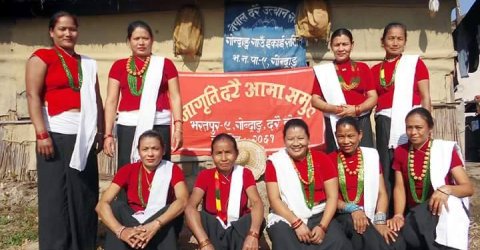
Beeshhazar Taal– A sustainable development initiative in Nepal
Beeshhazar Taal is a lake surrounded by marshy areas in the Chitwan National Park, a UNESCO World Heritage Site in Nepal. It lies in the Barandabhar forest area of central Nepal. The lake provides shelter and water for the wild animals of Chitwan and is also home to many varieties of birds. It sits at 286 metres above sea level and covers an area of over 3,200 hectares. Chitwan is famous for its wildlife, including the one-horned rhino, Royal Bengal tiger and numerous species of birds.
The conservation of the lake is guided by the Beeshhazar Lake Management Committee, an excellent example of a partnership between the Government of Nepal and the local community, working together for sustainable tourism.
Awareness of the importance of the wetland has increased significantly since Beeshhazar and Associated Lakes were listed as a Ramsar Site in 2003. The community here has adopted ways of living that achieve a harmony between their culture and the environment.
Much of human civilisation has historically developed close to rivers, lakes, marshes and springs, since sources of water are crucial for sustaining life. Water availability also influences the distribution and movement patterns of wildlife, and the Barandabhar lake system is important in this respect, particularly given its position between the hills and the terai (lowlands).
The area’s importance for wildlife increases during the summer when the land around is dry. It is also a haven for Siberian birds that migrate thousands of miles to escape the frozen north and spend the winter here.
According to official records, numbers of tourists visiting the wetland have increased as awareness programmes have helped to promote interest in the area.
Tourism entrepreneurs around Beeshhazar have recently started minibus and jeep safaris in the community forests that are designated as buffer zones where tourism is allowed to take place. Visitors have the opportunity to see one-horned rhinoceros, barking deer, tiger, wild cat, wild boar, numerous birds and wild plants. Since December 2016 the operators have also been offering elephant safaris in conjunction with the Chitwan National Park.
The Beeshhazar Lake Management Committee is coordinated by the National Park’s Chief Conservation Officer and the Assistant Conservation Officer of the Beeshhazar Lake and Bufferzone Board. All development and conservation work is undertaken in conjunction with the community associations who are members of the committee – the Barandabhar Consumer Group, Mrigakunja Consumer Committee, Bandevi Barandabhar Bufferzone Community Forest Consumer Group, Navajyoti Bufferzone Community Forest Consumer Group, Dakshinkali Bufferzone Community Forest Consumer Group, Tikauli Bufferzone Community Forest Consumer Group and the Milijuli Bufferzone Community Forest Consumer Group.
There are four ticketed entry points to the area and the fees are put into a Beeshhazar Lake Fund. Fifty per cent of this Fund is used for the development of Beeshhazar and Associated Lakes, 20 percent goes to two consumer groups in the area and the remaining 30 percent is allocated to the five bufferzone community forests.
All the funds received by the consumer groups and the bufferzone community forests are used to support the livelihoods of the community members. Water hyacinth and other plants collected from the lake as part of the wetland management are sold to local organic fertiliser manufacturers, and the profits are added to the Lake Fund. Capacity building and training in animal husbandry, cultivation, textile crafts, driving, beauty treatments and other skills are provided to the poorer and more marginalised members of the community.
People in the past used this area for cattle grazing, fishing, vegetable growing and as a source of drinking water. The awareness and engagement programmes in more recent times have involved them increasingly in environmental protection and sustainable tourism. Fishing and grazing are controlled, and cultural heritage is maintained through traditional costumes and performances. The Darai community in the Barandabhar Bufferzone Community Forest has been given a new pond for fishing as an alternative to the lake, so that their traditional livelihood can be sustained. The Mrigakunj Consumer Committee in the Tikauli Bufferzone Community Forest has similarly helped the indigenous Chepang community with the provision of a new Chepang Pond for the same purpose.
Approaches such as these offer a promising model of sustainable ways of integrating wetland conservation, tourism development and local livelihoods, with wetland cultural heritage at their heart.

By Ranu Shah, Manager – Nepal Tourism Board
Ranu Shah works as a Manager in the Tourism Products & Resources Development Department of the Nepal Tourism Board. She is a Human Resources Development Manager and has worked in the field of sustainable tourism development for the past 13 years. Ms. Shah holds a Master’s degree in English Literature from Tribhuvan University, Kathmandu, Nepal. She also has experience in teaching high-school students and in working with international organisations.